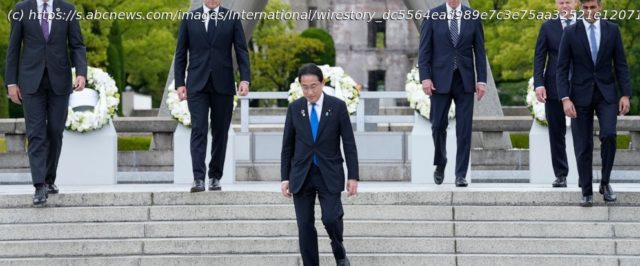Holding this week’s Group of Seven summit in Hiroshima, the site of the world’s first atomic bomb attack, is an attempt by Prime Minister Fumio Kishida to promote an anti-nuclear message
This weekend’s Group of Seven leading industrial nations summit in Hiroshima provides a rare — and possibly final — chance for survivors of the atomic bomb attacks on Hiroshima and Nagasaki to push for nuclear disarmament before a global audience.
Prime Minister Fumio Kishida, who has roots in Hiroshima, chose the city in part to highlight their nuclear nonproliferation efforts, which have been shaken by Russia’s nuclear threats against Ukraine and rising aggression from nuclear-armed China and North Korea. He greeted leaders from the G7 on Friday at the city’s Peace Memorial Park and escorted them to pay respects to those who died from the attack after seeing exhibits at a museum dedicated to them, and met with a survivor of the Hiroshima atomic bombing. On Sunday, Kishida will also do the same for leaders from guest nations.
Kishida has pledged to act as a bridge between nuclear and non-nuclear states, but some critics say his disarmament goals are hollow. Japan relies on the United States nuclear umbrella for protection and has been rapidly expanding its military.
Sueichi Kido, a 83-year-old “hibakusha” or survivor of the Nagasaki explosion, says he is skeptical about whether the prime minister can convince G7 leaders — including nuclear states the U.S., the United Kingdom and France — to make real disarmament progress.
“But because they are meeting in Hiroshima I do have a sliver of hope that they will have positive talks and make a tiny step toward nuclear disarmament,” Kido said.
The United States dropped the world’s first atomic bomb on Hiroshima on Aug. 6, 1945, destroying the city and killing 140,000 people. It dropped a second bomb three days later on Nagasaki, killing another 70,000. Japan surrendered on Aug. 15, ending World War II.
Kido hoped the leaders would spend more time than former U.S. President Barack Obama in his rushed 2016 visit through the museum exhibits that include the mangled buildings and bodies in the aftermath of the attack.






